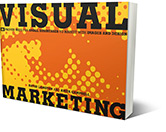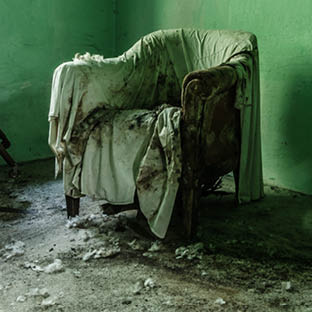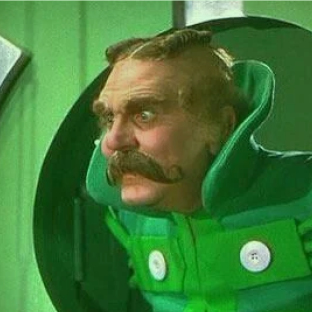NYC Designer shares a guided process for developing a new brand.
NYC Designer shares a guided process for developing a new brand.
For a printable version of this blog entry, click here.
 I have one of those minds that doesn’t do well on standardized test. I question the questions too much. I read into them and scrutinize the many ways that each question may be interpreted. I once flunked my driver’s test renewal in New Jersey when I was in my late 20s. The question that did me in was one that asked what to do when you come to a steady yellow light. The correct answer in New Jersey is to slow down and prepare to stop. I consider a yellow light that is about to turn red as not in a “steady” state. To me, a flashing yellow light that consistently flashes is doing something “steady.” I selected, “Proceed with caution,” and had to wait another 30 days to take my exam again. The kind of thinking that interprets things differently may not excel on standardized tests, but it does come in handy when brainstorming a new logo concept. Seeing things from different angles presents the client with new perspectives of their brand.
I have one of those minds that doesn’t do well on standardized test. I question the questions too much. I read into them and scrutinize the many ways that each question may be interpreted. I once flunked my driver’s test renewal in New Jersey when I was in my late 20s. The question that did me in was one that asked what to do when you come to a steady yellow light. The correct answer in New Jersey is to slow down and prepare to stop. I consider a yellow light that is about to turn red as not in a “steady” state. To me, a flashing yellow light that consistently flashes is doing something “steady.” I selected, “Proceed with caution,” and had to wait another 30 days to take my exam again. The kind of thinking that interprets things differently may not excel on standardized tests, but it does come in handy when brainstorming a new logo concept. Seeing things from different angles presents the client with new perspectives of their brand.
Research and discovery
A new logo design begins with research. Who is the client? What type of service or product will the logo represent? There are two reasons to do this: 1. To make sure the logo concepts are relevant to that company and its industry and 2. To make sure you don’t do something that’s already been done.
Key decision-makers should be part of the research process. It’s important to get everyone on board from the beginning. One of the biggest mistakes you can make is to try to do a logo for a company and show it to the CEO later. It’s not about impressing the leaders with your cool design it’s about engaging the leadership in the process of developing a logo. We interview the key executives in the company – especially the CEO or owners–– and glean information about the current state of the company, its past and more importantly, its future.
Logo as Group Therapy
Examining what works in a company’s relationship with its public and its employees and taking a hard look at what doesn’t work is like a therapy session. You look at where a company is going and try to identify the images and themes that embody the aspirations of a company, product or service. We always caution our clients: we can make you look really good, but you must live up to the promise of your brand.
 Once we were working on a new Internet investment account. The two managers of the company came in to discuss their new identity. One manager insisted that the investment philosophy should be long-term while the other wanted to capitalize on the potential “dot com millionaire” growth. They began to argue about the logo, but what they really were discussing was the direction of the company. We took a lot of notes. We asked them who was buying their mutual fund. They told us they thought it was entrepreneurs, silicon valley investors, young investors who wanted a piece of the action in Internet and technology investments. We asked them to go back to their database and tell us who was really buying their mutual funds. And they came back and told us that it was not who they expected. In fact, the biggest group of clients were dentists. Dentists? This information was crucial. Dentists were small business owners who had money to invest, wanted a piece of the Internet excitement but not necessarily the high level of risk. A mutual fund that invested in Internet stocks was exciting and was a safe bet. We used that to inform our design solution which positioned the fund as the authority on the “Information Highway.”
Once we were working on a new Internet investment account. The two managers of the company came in to discuss their new identity. One manager insisted that the investment philosophy should be long-term while the other wanted to capitalize on the potential “dot com millionaire” growth. They began to argue about the logo, but what they really were discussing was the direction of the company. We took a lot of notes. We asked them who was buying their mutual fund. They told us they thought it was entrepreneurs, silicon valley investors, young investors who wanted a piece of the action in Internet and technology investments. We asked them to go back to their database and tell us who was really buying their mutual funds. And they came back and told us that it was not who they expected. In fact, the biggest group of clients were dentists. Dentists? This information was crucial. Dentists were small business owners who had money to invest, wanted a piece of the Internet excitement but not necessarily the high level of risk. A mutual fund that invested in Internet stocks was exciting and was a safe bet. We used that to inform our design solution which positioned the fund as the authority on the “Information Highway.”
The Research and Discovery phase of work sets the stage for the brainstorming and creative exploration. We submit a Marketing Objectives Report to our client for review that defines the key words and themes for creative exploration. Then we begin the Design Exploration phase.
Design Exploration
There’s a lot of truth that not thinking about a problem may lead to a solution. While you are thinking of something else, your brain is subconsciously working out concepts. In Wired magazine, Brendan I. Koerner goes as far as to suggest that Facebook and Twitter time can stimulate creative thinking: “Humans weren’t designed to maintain a constant focus on assigned tasks. We need periodic breaks to relieve our conscious minds of the pressure to perform pressure that can lock us into a single mode of thinking. Musing about something else for a while can clear away the mental detritus, letting us see an issue through fresh eyes, a process that creativity researchers call incubation.”
If you can tap into your subconscious and access those buried thoughts you may be able to improve your ability to brainstorm. We use a “Working Together/Working Apart” process where we meet as a team to discuss the marketing objectives and themes for an assignment, then go away to our private spaces to develop concepts and sketches. Then when we come back and share our work we are exposed to each other’s ideas and that usually opens up more possibilities and creates new directions to pursue.
Here are a few categories of exploration that we often consider:
Typographic solutions:
Just about every logo has letters in it, and unless you have the marketing budget and can just do it like Nike, you are most likely going to have to spell out your company, product or service name in the logo. Becoming familiar with how the letters in a name look in different typefaces is a great way to begin a design exploration. We will typeset the name in various styles and weights and begin looking at all capital letters vs upper and lower case. This simple exercise can lead you along a path of the unexpected. Jim Keller, our Design Director, was recently experimenting with the letter “K” in the name “Koinonia” which is the Greek word for being “in community.” Koinonia is the name of an upstate Lutheran spiritual center for Christian leadership. The new logo was intended to embody the peacefulness, spiritual renewal and community connections. By putting the “K” on its side, Jim was able to create a new inspirational logo that resembles a dove in flight, an open book, a newly plowed field, or a growing plant.

The answer may be blowing in the wind.
I love walking around the city or in my neighborhood and encountering unexpected letterforms and shapes. I’ll see letters in the trees or in the drains along the side of the road. I’ll stare at patterns in the landscape or find a strange shape in the reflection in a puddle. I’ve heard the songwriter Randy Newman talk about how the cacophony of found noises in a traffic jam of car horns or something blowing in the wind may reassemble themselves in a musical composition. In the same way, “found” objects might trigger new visual solutions that turn into a logo. Louis Pasteur once said that “In the field of observation, chance favors only the prepared mind.” When themes are on a subconscious level, your mind is prepared to take advantage of the visual hints and clues that surround you.

Louis Pasteur: Always preparing for great discoveries.
There are no bad ideas.
There are plenty of bad ideas to go around, and sometimes you do just have to get them out of your system. Writer Anne Lamott says you have to just write that first “shitty draft.” Once you get it down on paper, then the real writing begins. Every once and a while a really strange idea will make it to a final presentation, but most of the time the silly and crazy concepts free you up to think about something in a new and unorthodox way. Your bad idea may be the germ of a new idea that influences your next thought or the thoughts of your team of brainstormers.
The Team Approach
Some people generate a lot of ideas and some people need to react and respond to ideas. Both skills are important and the most exciting brainstormings are when one idea inspires another. We bring our team together and share ideas. We put the sketches on the wall and discuss the concepts. Then we move them around and regroup the sketches, not by who drew them but by categories that go together or share certain characteristics. One of my favorite sessions involved creating a benefits communication campaign for a consulting group. The consultants at this company were young and on-the-go, they spent most of their time on the road in other people’s offices and rarely attended on site meetings or connected in a traditional way to their home office. We had to break through the clutter and catch the attention of a population that wasn’t concerned about their company’s resources from health benefits to long term retirements plans.
One member of our team was working on a series of sarcastic sayings: “Look before you leap and you will lose.” Another was drawing cartoon characters like “Ask Jeeves” who would serve up advice in a Miss Manners/Dear Abby style column while one of us just thought we should feature a cute dog, because everyone likes to look at dogs, right? None of these ideas were resonating in and of themselves, but in the world of brainstorming, the dog was named “Benny” and he started offering advice which in turn became these sarcastic saying that captured the attention of our target audience. It was one of those times when all the crazy ideas combined make a distinctive marketing campaign that went on to the capture over 85% of the employees in a successful enrollment program that garnered acclaim and won awards.




